ROUTE OF THE MAYA
November 9 - 26, 2010
Page One
El Salvador - first country visited
Brief Overview of the History of Mayan Civilization
More than 3000 years ago, Mayan civilization began to develop in the Pacific highlands of Central America between 1500 BC and 100 AD. Between around 250 and 900 AD was the Classic Period in Mayan civilization, when great city-states were built. They created a writing system, devised a calendar, introduced the concept of zero in math, predicted lunar and solar eclipses, and built the tallest structures in the Western Hemisphere.
After 900 AD, many Mayan cities were abandoned. Some cities, though, survived in a post-Classic period that extended to the 16th century. The remnants of the ancient civilization are scattered across 5 countries in Central America - Mexico, El Salvador, Honduras, Guatemala, and Belize. The ruins are along a 1,500 mile trade ring known as La Ruta Maya, or the Route of the Maya. This trip involved viewing of ruins and rituals and rural villages and interacting with the modern-day descendants of the Maya as well as other citizens of 4 of the 5 countries, excluding Mexico.
The first stop was El Salvador.
The country of El Salvador is about the size of Massachusetts with a population of about 7.2 million. The capital city of San Salvador has about 1.6 million people. In 1821 El Salvador declared its independence from Spain, and after being part of a Central American federation, El Salvador became an independent republic in 1838. Following a deterioration in the country's democratic institutions in the 1970s, a brutal civil war ensued from 1980 to 1992. About 80,000 people are estimated to have died. The movie "Innocent Voices," produced in the U.S., is based on the true story of a boy forced into the choice of joining guerrillas or the Army by age 12. In January 1992, the opposing sides signed peace agreements that ended the war, brought the military under civilian control, and allowed the guerrillas to form a legitimate political party. In 2001, the U.S. dollar became legal tender in El Salvador. Earnings from Salvadorans working both legally and illegally in the U.S. are an important source of income for many. About 1/4 of the population gets money from people in the States. One estimate is that there are 2.5 million El Salvadorans in the U.S. Due to its location on the Pacific's earthquake-prone Ring of Fire and to hurricanes, its history is full of catastrophe. It also has numerous volcanoes. The Poma family, headquartered in El Salvador, controls quite a bit of the country and Central America generally, including intercontinental hotels, auto companies, and 80% of the shopping centers in Central America.
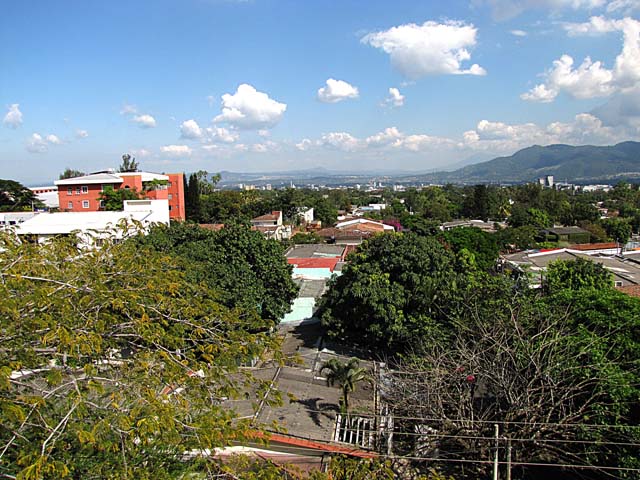
View of the city of San Salvador, capital of El Salvador

World Trade Center near our Crowne Plaza Hotel in San Salvador
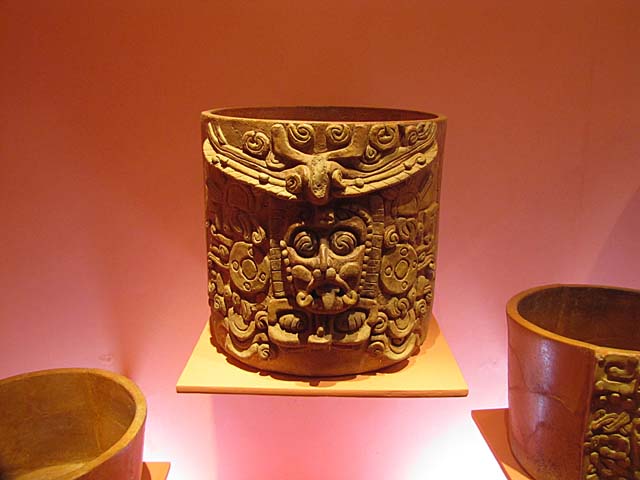
Mayan pottery from Classic Era in Anthropology Museum (MUNA) in San Salvador
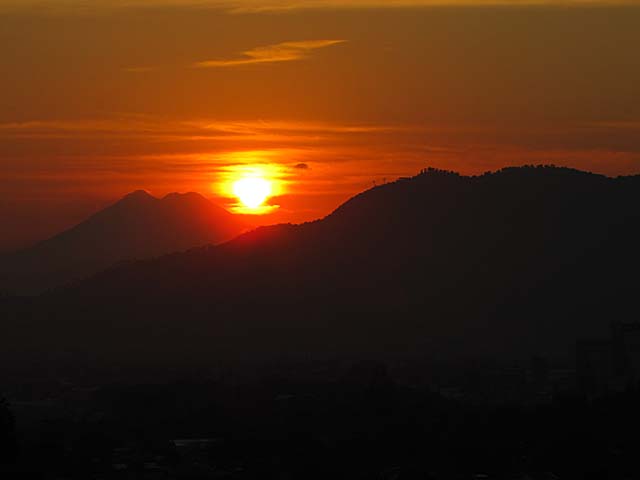
Sunset over San Salvador with volcanic mountains in the distance
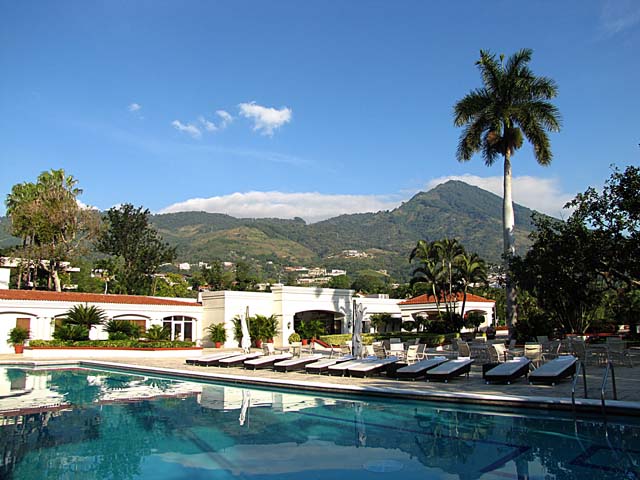
View of surrounding mountains from our hotel in San Salvador. We had a buffet breakfast at the hotel
that included the common option of fruit, beans, and pupusas. A pupusa is a traditional Salvadoran dish
made of thick, hand-made corn tortilla that has fillings such as cheese, cooked ground pork, squash, or refried beans.
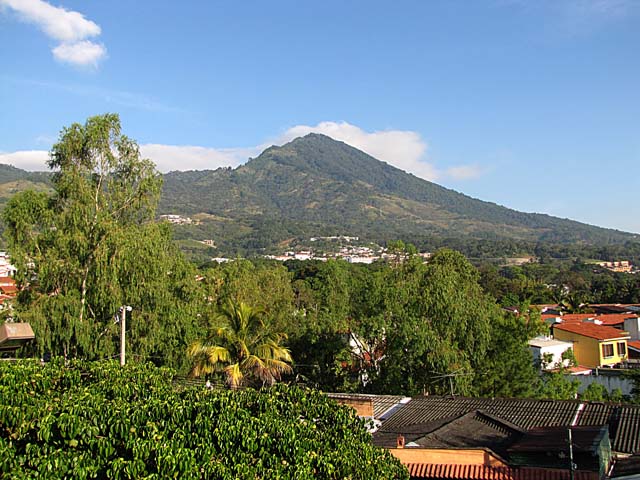
Another view from our hotel. San Salvador is surrounded by volcanoes and prone to earthquakes.
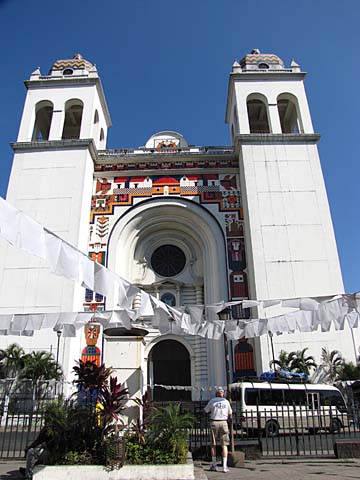
The Metropolitan Cathedral was constructed in 1888 with wood
material. It was destroyed by fire in 1951 and was rebuilt in 1999.
The facade was decorated and painted by famous
Salvadoran artist Fernando Liort.
The Metropolitan Cathedral of the Holy Savior is the principal church
of the Roman Catholic Archdiocese of San Salvador
and the seat of the Archbishop of San Salvador.
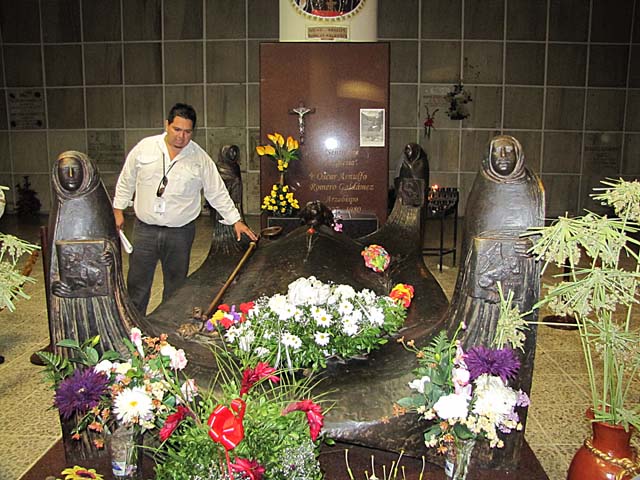
Inside the Cathedral. The tomb of the assassinated Bishop Oscar Romero. During the Civil War he called for
peace. He was assassinated at a mass in 1980.
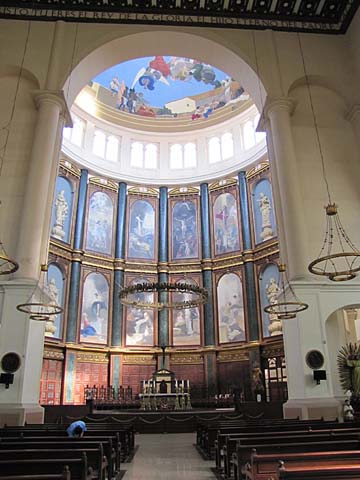
Inside the Cathedral
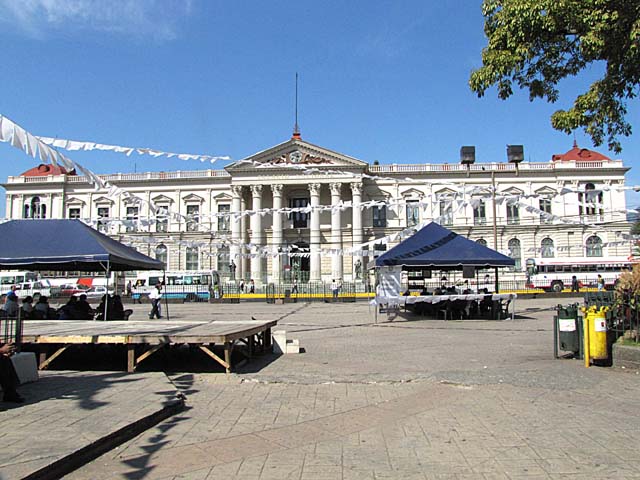
The National Palace in San Salvador as seen from the Central Plaza. The Metropolitan Cathedral is also across from
the Plaza.
The National Palace is considered one of the most majestic buildings in El Salvador.
The idea to build
the structure
came from Captain General Gerardo Barrios, one of the most popular presidents in the country's history.
Construction commenced in 1866 and was completed in 1870. Unfortunately, on November 19, 1889, a fire
reduced it to rubble. The current palace was built between 1905 and 1911.
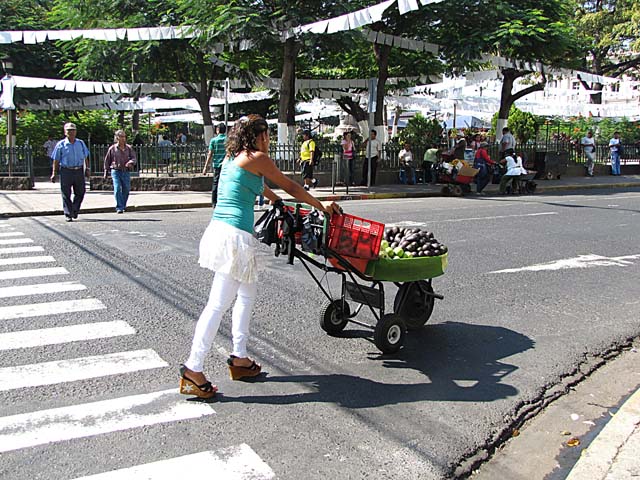
Many of the vendors are women. They commonly wear frilly aprons with pockets. Vendors get no benefits
or pension. The average education level of the population is 6th grade.
Link to Page Two - Joya de Ceren Archaeological Site
Pat's Home Page